Sciatica can be incredibly painful and disruptive, affecting everything from sitting and walking to sleeping comfortably. The condition can feel different for everyone and be a minor but constant nuisance, or be completely debilitating.
That’s why the best treatment for sciatica, even in 2025, isn’t a one-size-fits-all solution. Instead, it requires a personalized approach tailored to your specific symptoms, lifestyle, and preferences for treatment.
Possible treatments for sciatica
Sciatica occurs when the sciatic nerve, the longest nerve in your body, becomes irritated or compressed. This can result from a range of causes, including herniated discs, spinal stenosis, or even prolonged sitting. Symptoms can range from mild tingling or numbness to debilitating pain that radiates down your lower back, hips, and leg.
Self-care strategies
For many people, the first line of defense against sciatic nerve pain is at-home care. These methods are particularly effective for mild to moderate flare-ups and can often be done at home:
- RICE method – Rest, Ice, Compression, and Elevation can help reduce inflammation and pain without the use of medication. Apply a cold pack for up to 20 minutes at a time, then switch to heat therapy to relax tight muscles.
- Over-the-counter pain relievers – Nonsteroidal anti-inflammatory drugs (NSAIDs) like ibuprofen can reduce inflammation and alleviate pain.
- Gentle stretching – Targeted stretches for the lower back, hips, and hamstrings can relieve tension on the sciatic nerve. Focus on gradually increasing flexibility each day and avoid overextending your joints.
Adopting good habits
Although sciatica can affect people of any age, it’s often more common in older adults due to age-related changes in the spine and muscles. This is why cultivating healthy habits early is one of the most effective ways to prevent or minimize sciatic pain in the long term.
- Prioritize posture – Poor posture can exacerbate sciatica symptoms. Whether sitting at a desk or standing, ensure proper spinal alignment. Use ergonomic chairs or lumbar support cushions if needed.
- Stay active – Regular low-impact exercises like cycling, swimming, or yoga can strengthen your core and improve spinal health, reducing the likelihood of recurring pain.
- Maintain a healthy weight – Excess weight adds stress to your spine and can worsen sciatica. A balanced diet and regular exercise can help mitigate this risk.
Physical therapy
Physical therapy is one of the most effective ways to address sciatica for lasting relief. A licensed physical therapist can assess your specific condition and guide you through exercises to strengthen your back, core, and leg muscles, all while improving flexibility.
Some additional benefits of physical therapy include learning new body mechanics to prevent future pain as well as targeted treatments like massage or electrical stimulation for immediate relief.
Conservative medical treatments
If self-care and physical therapy don’t yield sufficient results, more in-depth medical interventions may be recommended. These include medications like muscle relaxants and corticosteroid injections for inflammation relief.
Surgical options
For severe cases that don’t respond to conservative treatments, surgery may be the best option. Procedures like a discectomy (removal of a herniated disc fragment) or laminectomy (removal of part of the vertebra pressing on the nerve) are reserved for cases involving significant pain, muscle weakness, or loss of bladder control.
How to relieve sciatic nerve pain quickly
Anyone who’s experienced sciatica pain wants it to be over quickly. The fastest way to find relief is to take action rather than hope the pain goes away on its own. The sooner you start a customized treatment plan, the faster you’ll find relief.
Physical therapy for sciatica near me
Whether your sciatica stems from a herniated disc, poor posture, or years of ignoring back pain, seeking professional help can make all the difference. At Whatcom Physical Therapy, we specialize in personalized treatment plans tailored to your situation.
Our team of experienced therapists uses evidence-based practices to help you find relief and reclaim your quality of life. From guided exercises to hands-on care, we’re here to support you every step of the way.
Start finding relief by calling one of our clinics north of Bellingham or by requesting an appointment online today.

